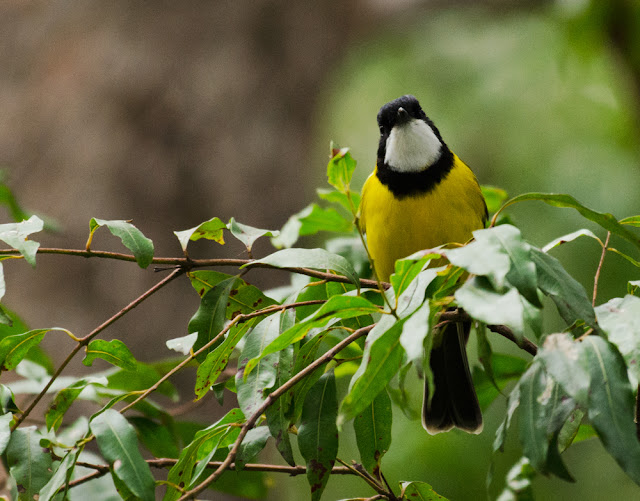 |
| A curious golden whistler greets the group; Photo by Matteo Grilli |
Wild BNE’s winter meet-up was held this past Sunday and it was a great success.
 |
| A variety of exotic and ornamental plants grow along the fenceline between the reserve and suburbia; Photo by Aaron Wiggan. |
Together, we took a group of ten lovely people through the reserve, looking at suburban encroachment, eucalypt woodland and the gorgeous gallery rainforest growing along the creek.
Ten highlights from the day included:
1. A stunning male golden whistler (Pachycephala pectoralis) that gave us a brief but perfect view in a weeping lillypilly (Waterhousia floribunda) along the creek.
2. The opportunity to become familiar with koala (Phascolarctos cinereus) droppings (cigar-shaped, eucalyptus-scented, sometimes punctured with a small hole where a species of moth has emerged), thanks to guest Damian, who rounded up a few pellets underneath a eucalypt.
 |
| Golden-tailed spiny ant; Photo by Renate Hottmann-Schaefer. |
3. A variety of fascinating ants, including the spider ant (Leptomyrmex species), golden-tailed spiny ant (Polyrhachis ammon) and a colony of pasture funnel ants (Aphaenogaster pythia).
4. The magnificent ‘Dingley Dell’ gallery rainforest, where Trina informed us of the creek ecology, invasive plant species and water flow patterns.
 |
| Invasive Alexandra palms (Archontophoenix alexandrae) grow on the streambank; Photo by Renate Hottmann-Schaefer. |
5. A thrilling visit by an elusive white-throated treecreeper (Cormobates leucophaea), making its way up the trunks of the eucalypts alongside to the path.
6. Speaking of eucalypts, there was a great variety of these wonderful trees present. Trina showed us the beautiful grey gums (most likely Eucalyptus propinqua) that have bright orange bark in late summer/autumn, as well as the scars on various tall ironbarks (E. crebra) from fierce lightning strikes. I shared the one easy trick I use to identify tallowwoods (E. microcorys), an important koala food tree.
 |
| Fan-tailed Cuckoo; Photo by Aaron Wiggan |
8. One of the tracks became slightly muddy, but presented us with the sight of a beautiful eastern yellow robin (Eopsaltria australis) pair, drinking from a puddle ahead of us.
9. Trina led us to a spot in the reserve that had a lemon tree growing, where we used our collective problem solving skills to get to the tastiest fruit at the top of the tree!
10. Those who finished up the walk with delicious food and drinks at French & Mor—yet another Albany Creek location I am grateful to Trina for introducing me to—would certainly agree that it was also one of the day’s highlights!
Thank you to everyone who came along on the day, you were all marvellous company and I can’t wait to do it again!
Nice photo of the orchid, Blc Pamela Heatherington I believe. It reliably flowers in the winter.
ReplyDeleteThanks Sri, I passed your compliment on to Aaron, the photographer. Glad you know your garden plants, I had no idea of the species!
DeleteSonded like good fun in great birdng company. great shot of the Whistler
ReplyDeleteThanks Margaret, yes it's always wonderful to find your "tribe" of people ☺
DeleteThat sounds great! Love your blog, you have heaps of knowledge about the local wildlife!
ReplyDeleteThanks so much, Ollie, I am glad you enjoy what you read here!
Delete